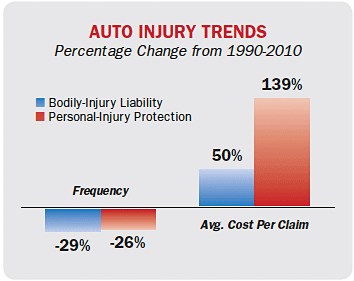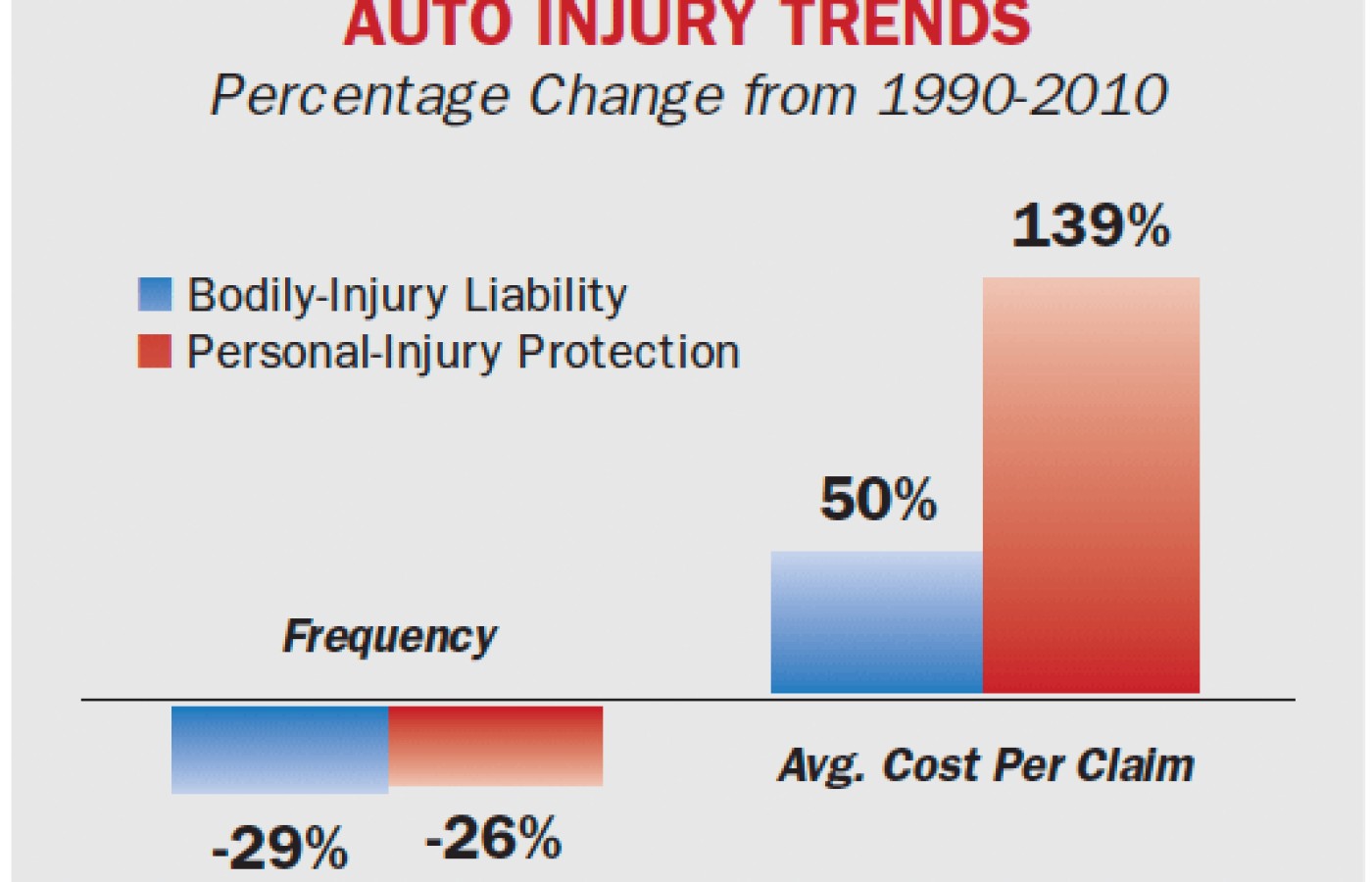In a landmark development, Blue Cross Blue Shield (BCBS) has reached a $2.8 billion settlement to resolve antitrust claims brought by health care providers, including chiropractors. The lawsuit accused BCBS of dividing the nation into exclusive regions and limiting competition, which resulted in lower reimbursements for providers. Although BCBS denies any wrongdoing, the company agreed to the settlement to avoid lengthy litigation – and you can get a piece of the pie.
The Changing Landscape Within Chiropractic and Personal Injury
Chiropractic represents less than 5% of the total healthcare arena, yet today, we treat more personal injury patients than any other specialty. Although this is a milestone of achievement worthy of celebration, it also puts us squarely in the spotlight at a time of runaway medical expenses, largely from fraudulent and inflated claims.
Chiropractic and personal injury are two poorly managed arenas that, when combined, create a love/hate relationship for both the carriers and the patients we seek to serve. This has allowed a minority of less ethical practitioners to jeopardize the valuable needed services provided by the majority of good and reputable chiropractors. It is imperative that we as a profession look to a collective solution if we want to preserve our reimbursement schedule and patients' access to the care they need.
Over the last 15 years, the number of fatal accidents has declined as the population and number of vehicle miles driven has risen.
Correspondingly, the frequency of auto injury insurance claims nationwide and the severity of victims' injuries have also declined significantly. Fewer patients are admitted to the hospital overnight or report days of restricted activity.
In contrast, the average cost per claim has steadily increased.- An increase in medical costs in general explains part of that increase, but a 2008 report by the Insurance Research Council showed that a large amount of that increase can be attributed to fraud and buildup of claims. (See graph) The report claimed this is a largely due to both accident victims and providers trying to get larger payouts.

Chiropractors are the most commonly sought specialty for accident patients, treating 33% of all accident victims. This is an appropriate selection, as 65% of accident injuries include musculoskeletal injuries from whiplash, to cervical, thoracic and lumbar strain/sprains. Chiropractic is the only profession trained specifically to treat these types of soft tissue injuries and our ability to help these patients is unparalleled.
Insurance carriers looking for savings are focusing on the dominant provider group and that's us. On top of attracting attention as the largest provider of care, claims with apparent fraud or buildup are more likely than other claims to involve chiropractic treatment. Attorney involvement is also heavily associated with fraud and buildup in personal injury. Estimates of the total excess payments due to fraud and buildup ranged from $4.8 billion to $6.8 billion a year.
In reality, the relationship between carrier and chiropractors has been far from satisfactory. Chiropractors have had to provide treatment without knowing if they will receive compensation, or how much. This has resulted in many chiropractors inflating claims in anticipation of requested reductions or denials.
Patients are not well served by this system either. They often don't know what treatment will be covered, how to go about getting treatment and have severely restricted choices about who best will serve them. In general, the best doctors are not always readily available or willing to accept personal injury patients, especially on a lien.
Insurance carriers are therefore left the task of trying to serve their clients while also managing fraud and buildup that exposes them to increased settlement risk. This abuse distorts the equitable distribution of claim dollars and places upward pressure on insurance rates for all policyholders.
With chiropractors being the largest provider specialty within the personal injury arena, attempts by insurance companies to control costs and fraud has led them to lobby for legislation that marginalizes or eliminates us. The Florida legislature recently passed a bill that limits the payment for chiropractor visits to $2500, with additional treatment requiring examination and authorization from a medical doctor.
Managed and contract care arrangements have dramatically decreased general health care reimbursement. By contrast, property and casualty companies have seen payments to providers skyrocket even though the majority of chiropractors can attest to no such increases in their reimbursement.
What we don't manage we will lose. With most chiropractors treating some form of personal injury, estimates are that up to 30% of chiropractors would go out of business if we do not offer a collective sustainable solution. Forming a network of chiropractic providers and establishing mutually agreeable fee schedules with carriers would help marginalize fraud, while increasing patient referral to the majority of honest, ethical chiropractors who provide valuable, needed services to personal injury patients.
If chiropractors had a direct relationship with the insurers, all parties would benefit. Providers would be sure of receiving an acceptable rate for their services, and would be more willing to see personal injury patients without the concern of reductions or denials.
Being the largest provider of treatment in the personal injury arena makes chiropractic a focus of cost containment. However, it also gives the profession an opportunity to lead the discussion for seeking a solution.
The treatment chiropractors render to personal injury patients is secondary to none in terms of recuperation and long-term follow-up for musculoligamentous injuries. Chiropractic is cost-effective and we have an incredibly high patient satisfaction with low disability ratings. Greater awareness of this value proposition among carriers will preserve provider reimbursement and still save billions though fraud management.
It is imperative that we open a line of communication and provide an option to work together if we want to preserve access control and management of personal injury patients.
References
- National Highway Traffic Safety Administration, Fatality Analysis Reporting System. www-fars.nhtsa.dot.gov/Main/index.aspx (Accessed March 13, 2013).
- Trends in Auto Injury Claims, 2011 edition.
- Carmichael A. Auto Injury Claims: The What, Why, and How of it All. Presented at the CAS Spring Meeting, Phoenix, AZ, May 2005.
- Insurance Research Council. Fraud and Buildup in Auto Injury Insurance Claims, 2008 Edition. November 2008.



